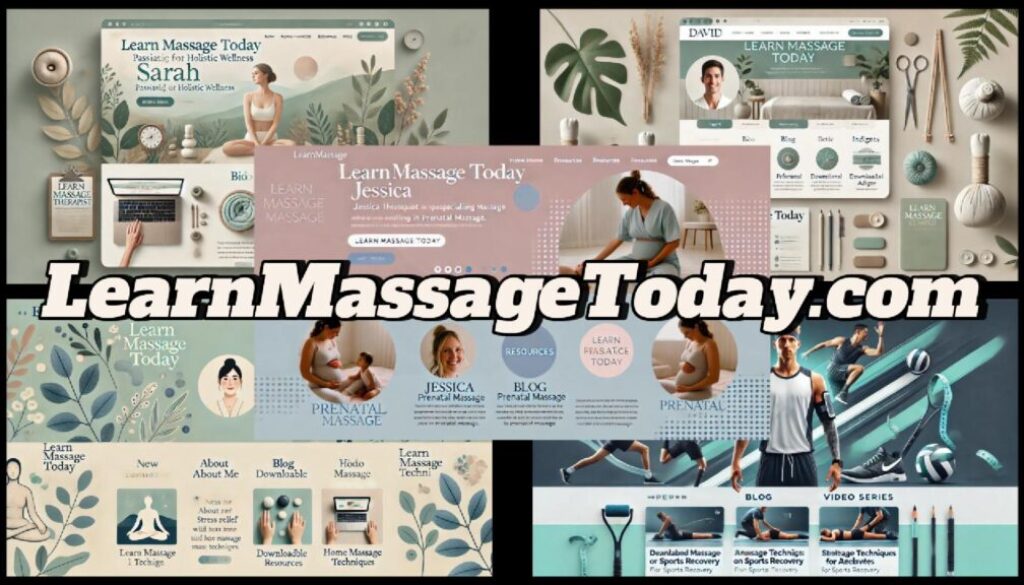Building David’s Blog: A Step-by-Step Approach for Success
David’s blog, learnmassagetoday.com, is set to become a powerful platform for both massage therapists and clients. By sharing his personal experiences and professional insights, David can build a community that values his expertise. Here’s a step-by-step guide to how I would build David’s website to maximize its impact and potential.
1. Home Page: Welcoming and Professional
The home page is the first impression visitors will get, so it needs to balance professionalism with a personal touch. For David’s blog, I’d design a clean, visually calming layout using soft blues and greens, symbolizing relaxation and wellness. The site would feature a prominent banner with a tagline like “Professional Insights and Personal Stories from the Massage Room,” clearly communicating what the blog offers.
The navigation menu would be intuitive, directing visitors to key sections like “Client Stories,” “Massage Trends,” and “Therapist Insights.” This layout ensures that readers can easily find the content they’re looking for and feel welcomed by the design.
2. Blog Structure: Easy Navigation and Engagement
To cater to David’s dual audience—massage therapists and clients—the blog needs a well-organized structure. I would divide the content into categories like “Industry Trends,” “Therapist Tips,” and “My Journey” to make it easy for readers to navigate. These categories will allow professionals to find industry insights while clients can enjoy David’s personal stories.
Engagement is key, so I’d include a comments section on each post. This feature would allow readers to interact with David, ask questions, and share their own experiences, creating a community feel that encourages repeat visits.
3. Mobile Optimization and SEO
In today’s world, many visitors will access David’s blog through their mobile devices. Therefore, I would ensure the site is fully mobile-responsive, providing a seamless experience for readers on any device.
In addition to user experience, search engine optimization (SEO) is critical for driving traffic. I’d optimize each post with keywords like “massage therapy trends,” “client interaction tips,” and “spa industry insights” to ensure David’s blog ranks well in Google searches. This approach will help grow organic traffic and expand his audience over time.
4. Personal Branding
Since David’s blog is centered around his personal journey as a massage therapist, strong branding is essential. I would create a simple, memorable logo featuring his name along with a massage-related symbol like a hand or leaf. This logo would be displayed prominently on the site and integrated into his social media channels. Consistency in branding will help establish David’s professional identity and build recognition.
5. Monetization Opportunities
To turn learnmassagetoday.com into a revenue-generating platform, I would integrate Google AdSense and affiliate marketing. Ads related to wellness products, massage equipment, and spa tools would fit seamlessly into David’s content and provide him with passive income opportunities. Additionally, affiliate links to products David personally uses and recommends would give his readers added value while generating revenue.
Conclusion
By following this strategic approach, David’s blog can become an engaging platform for both massage professionals and clients. From a welcoming home page to well-structured content and strategic monetization, learnmassagetoday.com will reflect David’s voice and expertise while growing his online presence.
Monetizing David’s Blog: Targeted Ads for LearnMassageToday.com


